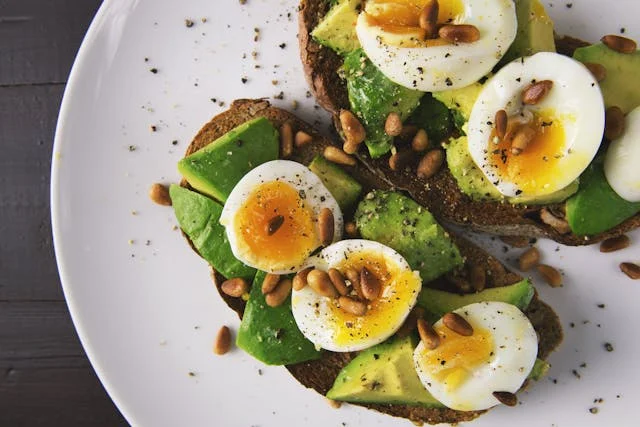How This Simple "Keto Meal Plan" Changed My Life
Have you ever wanted to eat rich, satisfying meals and still lose weight? That’s the magic of keto. A well-crafted ketogenic meal plan focuses on high-fat, low-carb foods that fuel your body, keep you full, and shift your metabolism into fat-burning mode.
Let’s break down what a typical keto day looks like—without sacrificing taste or variety.
What Makes a Meal Keto-Friendly?
Keto meals are built around three macronutrients:
-
Fats: 70–75% of your intake
-
Protein: 20–25%
-
Carbohydrates: 5–10% (usually under 50g net carbs/day)
To stay in ketosis, you’ll want to limit sugar and starch while focusing on quality fats and whole foods.
Pro tip: A successful keto plan isn’t just about cutting carbs—it's about nourishing your body with the right fats and nutrient-dense options.
Sample One-Day Keto Meal Plan
Here’s how a satisfying, high-fat, low-carb day can look:
🥓 Breakfast: Keto Avocado & Bacon Egg Cups
-
Eggs
-
Avocado slices
-
Nitrate-free bacon
-
Topped with shredded cheese and baked in muffin tins
This meal is rich in protein and healthy fats to keep your energy levels stable through the morning. Want grab-and-go options? Try this done-for-you keto breakfast kit made for busy mornings.
🥗 Lunch: Spinach & Salmon Keto Bowl
-
Grilled salmon (omega-3 rich)
-
Spinach and arugula
-
Olives, cherry tomatoes (low-carb)
-
Olive oil vinaigrette and pumpkin seeds
This anti-inflammatory combo supports heart health and hormonal balance.
🍲 Dinner: Creamy Garlic Chicken with Zoodles
-
Chicken thighs sautéed in coconut oil
-
Heavy cream, garlic, and parmesan sauce
-
Served over spiralized zucchini “zoodles”
This savory dish is a keto comfort food classic.
Low on time? Check out this custom keto meal plan tailored to your preferences and macros.
🍫 Snack Ideas (Under 5g Net Carbs)
-
Macadamia nuts
-
Hard-boiled eggs
-
Celery with cream cheese
-
Keto fat bombs (coconut oil, cocoa, stevia)
-
Mini cheese wheels
High-Fat Foods to Stock Your Keto Kitchen
Your fridge and pantry should be keto-ready. Here’s a list of staples:
🥑 Healthy Fats
-
Avocados and avocado oil
-
Coconut oil and MCT oil
-
Olive oil
-
Grass-fed butter or ghee
-
Fatty fish (salmon, sardines, mackerel)
-
Nut butters (almond, macadamia)
🧀 Keto-Approved Proteins
-
Eggs (preferably pasture-raised)
-
Ground beef, lamb, or pork
-
Chicken thighs and wings
-
Sausages (sugar-free)
-
Tofu or tempeh (for plant-based keto)
🥬 Low-Carb Vegetables
-
Spinach, kale, arugula
-
Cauliflower, broccoli, zucchini
-
Mushrooms, asparagus, green beans
-
Cabbage, brussels sprouts
Want a full grocery list & recipes? Grab your free keto quick-start guide here ➝ Download NowDownload Now
Tips for Sticking to a Keto Meal Plan
1. Meal Prep on Sundays
Batch-cook proteins and veggies to save time and stay consistent.
2. Track Your Macros
Use apps like Carb Manager or MyFitnessPal to keep carb counts in check.
3. Hydrate and Add Electrolytes
Low-carb diets reduce water retention. Drink water and supplement sodium, magnesium, and potassium.
4. Have Keto Snacks on Hand
Snacking wisely can prevent sugar cravings and overeating.
Not sure what to prep? Take this keto quiz and get a done-for-you weekly meal plan.
FAQ: Starting a Keto Meal Plan
How do I know if I’m in ketosis?
Common signs include reduced appetite, mental clarity, and increased energy. You can also use urine test strips or a ketone monitor.
Can I do keto if I’m vegetarian?
Yes! Focus on eggs, cheese, tofu, tempeh, nuts, seeds, and low-carb vegetables.
What should I avoid on keto?
Sugary drinks, bread, pasta, rice, beans, and most fruits (except berries in moderation).
How long until I see results?
Many people notice changes in energy and appetite within a week. Weight loss often begins within 2–3 weeks with consistency.
Final Thoughts: Make Keto Work for You
Keto doesn’t mean deprivation—it means upgrading your meals to support fat-burning, energy, and wellness. By focusing on high-fat, low-carb, whole foods, your meal plan can be both delicious and effective.
Ready to skip the guesswork? Try a Custom Keto Plan built just for your body and lifestyle.
.png)
.png)

.jpeg)





.png)

(1).png)
.png)